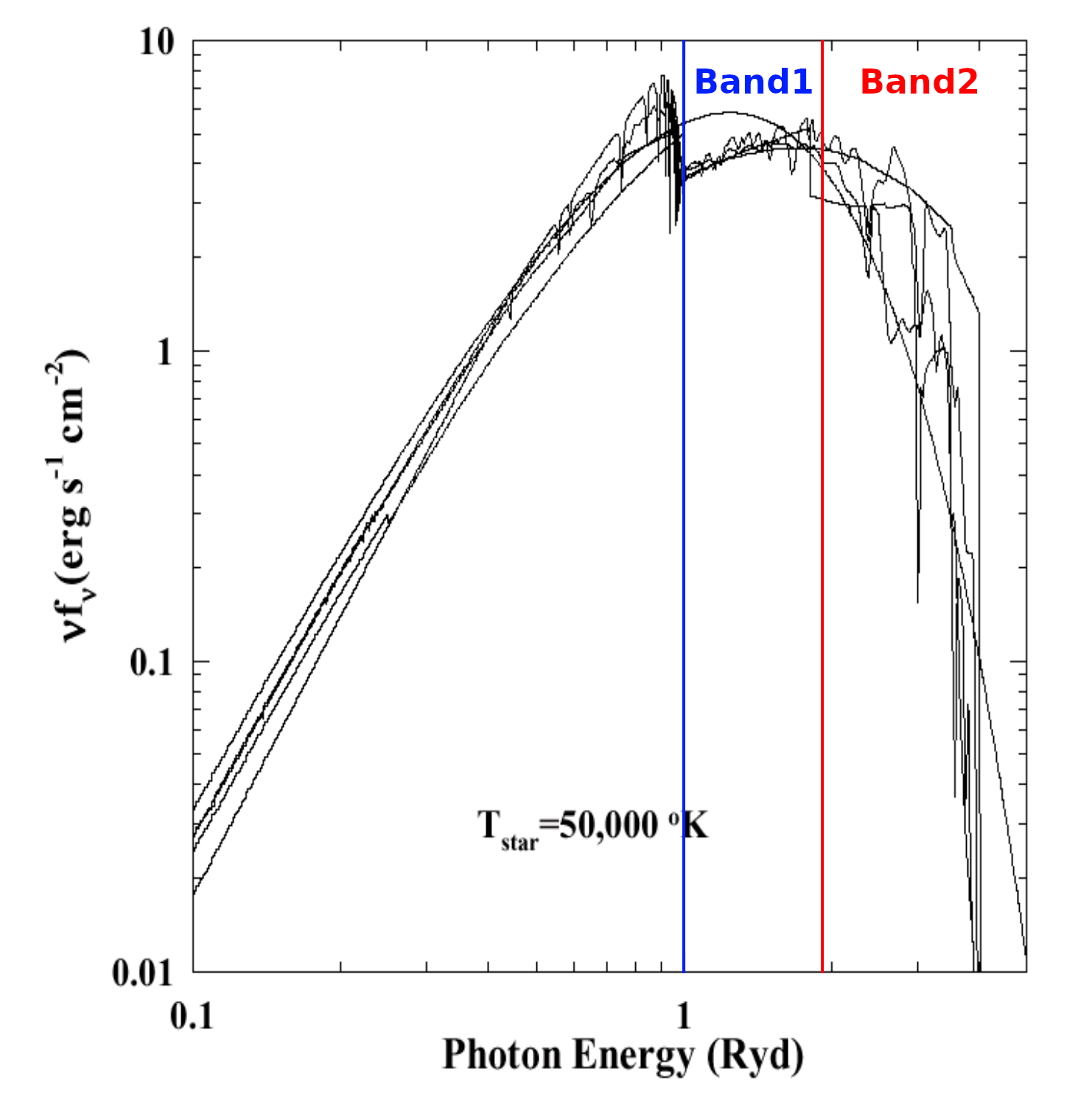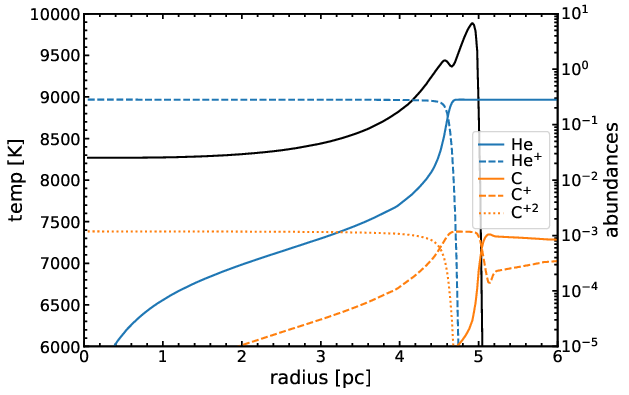Multi-band ray-tracing of ionizing photons
Author: Sebastian Vider
In the previous monthly highlight, an overview was provided on the subject of simulating the processes of the Interstellar Medium (ISM). In this segment, we will take a closer look at one of those processes, namely ionizing radiation, and how to simulate it. Ionizing radiation is defined as the radiation of photons with an energy greater than 13.6 eV. These photons possess the capacity to ionize hydrogen. Massive stars, due to their high surface temperatures, emit a substantial number of ionizing photons, leading to the formation of HII regions, which are regions of ionized hydrogen gas. Stars with surface temperatures above approximately 40,000 K emit photons with even higher energies, namely greater than 24.6 eV, and can therefore also ionize helium and create HeII regions. The temperature structure within the ionized regions is determined by a balance between heating and cooling processes. Heating is provided primarily by the ionizing photons, which transfer their excess energy, that is, the energy of a photon exceeding the 13.6 eV required to ionize H, to the gas. The predominant cooling processes are cooling due to metal lines and recombination cooling.
In order to model the radiative transport of the ionizing photons with the 3D hydrodynamics code Flash, we employ a ray-tracing algorithm. The standard version of the algorithm treats all ionizing photons equally and assumes that they all have the same mean energy, calculated from the stellar spectral energy distribution (SED) of the radiation source. The consequence is that the HII regions simulated with that method have a flat temperature profile. Furthermore, the method cannot produce the correct abundances of ionized elements, with the exception of hydrogen.
The new multi-band UV ray-tracing module allows the user to define up to 9 energy bands in the range between 13.6 eV (=1 Ryd) to 100 eV (see Fig. 1). This makes it possible to accurately simulate the ionization states of several species such as He, C, O, Si, N, etc. and results in a more realistic temperature profile (see Fig. 2). This has a small impact on the dynamics of the region, but more importantly, it is now possible to generate much more accurate synthetic emission maps from ionized species such as [CII].

